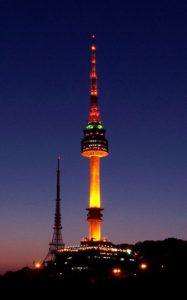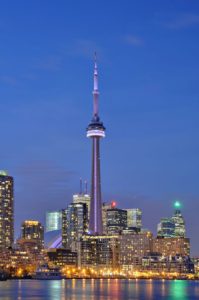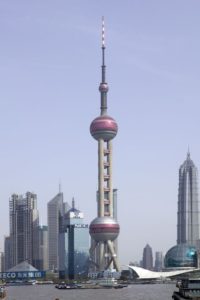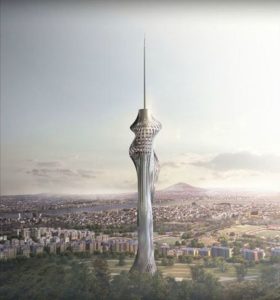Amazing Communications Towers around the World
All information below came from the official website or Wikipedia (except photos).
- Canberra Telstra Tower
Canberra’s most visited tourist destinations but also offers 360 degree panoramic views of Canberra and its surrounding countryside from an indoor observation deck, two outdoor viewing platforms and Executive Briefing Centre – meeting rooms.

As well as the telecommunications facilities the tower also has a café with Canberra’s best views, a Conference Centre offering spectacular outlooks and state of the art AV. The lower level of the Tower’s entrance foyer, houses the Telstra Heritage Exhibition which traces the history of Australian telecommunications as well as a theatre showcasing a video, produced shortly after the Tower opened in 1980 on the tower’s design and construction.
The Tower has won two awards for outstanding design, the first was in 1979 when the Tower was nearing completion, it was for imaginative and effective use of concrete in a building and then in 1980 it won the Civic Design Award of the ACT Chapter of the Royal Australian Institute of Architects.
2) Namsan Seoul Tower

Namsan Seoul Tower was the first tower-type tourism spot in Korea.
The top of the tower is at almost 480m above sea level, including Namsan Mountain (243m) and the tower’s own height (236.7m), making it one of the tallest towers in the Orient. It is comprised of Seoul Tower Plaza, recently opened to public access after 40 years, and N Seoul Tower, operated by CJ Foodville since 2005. The tower was first established as a broadcast tower to send out TV and radio signals in 1969. As of now, it has become one of the representative landmarks and multi-cultural venues in Seoul.
3) Madrid Torrespaña

Popularly known as ‘El Pirulí’, this RTVE communications tower is one of the icons of Madrid and a reference in its skyline in the north of the city.
With a height of 220 metres, various TV channels and radio stations broadcast from this centre.
4) CN Tower

In 1995, the CN Tower was classified as one of the Seven Wonders of the Modern World by the American Society of Civil Engineers. The CN Tower shares this designation with the Itaipu Dam on the Brazil/Paraguay border, the Golden Gate Bridge in San Francisco, the Panama Canal, the Chunnel under the English Channel, the North Sea Protection Works off the European coast, and the Empire State Building.
Since the Tower opened, Canadians and tourists from around the world have made the trip to Toronto to celebrate this marvel of civil engineering. Besides serving as a telecommunications hub, the Tower provides world-class entertainment and a wide range of unique attractions, exhibits and food and beverage venues.
5) Funkturm Wien-Arsenal

Completed in 1975, the Vienna Arsenal radio tower of the A1 Telekom Austria (also known as arsenal tower, Arsenal tower, abbreviated RiFu Arsenal, Post Tower or simply Alfred) is a 155 meter high freestanding tower with a reinforced concrete shaft in the 3rd district of Vienna the plans of the architect Max Agnese (office Kurt Eckel) and a strikingly visible building in the south of Vienna.
The base has an altitude of 201 m above sea level.
6) Berlin TV Tower
The TV Tower at Alexanderplatz is Berlin’s most prominent landmark and the tallest building in Germany. Its steel sphere contains a visitor platform and a revolving restaurant.

Everyone is supposed to remember that Berlin’s Fernsehturm (TV Tower) is 365m high and the tallest building in Berlin. As urban legend has it, the tower’s height was a deliberate decision taken by Walter Ulbricht, Leader of the SED, so that every child would be able to remember it, just like the days of the year. In fact the tower’s summit today is 368m.
Construction for the GDR transmitter started in the 1950s and the tower erected between 1965-69 was intended as the tallest tower in Europe second only to Moscow’s own TV tower. It was built by East German architects Fritz Dieter, Günter Franke and Werner Ahrendt.
7) Calatrava Montjuïc Tower
The Montjuïc Tower is a telecommunications tower, built by the architect and engineer Santiago Calatrava, built between 1989 and 1992 in the Olympic Village of Montjuïc, Barcelona, due to the 1992 Olympic Games.
This steel tower is about 136 meters high and has an innovative design with respect to most communication towers, since its structural form is not based on a vertical trunk, but on a silhouette that reminds an athlete kneeling to collect a medal.
Also known as “Torre Calatrava”, its base is covered with trencadís, in clear reference to one of the constructive characteristics of Gaudí.

The very orientation of the tower makes it act like a sundial when projecting the shadow of its central needle on the square of Europe (plaça d’Europa).
In addition, it presents the technical novelty of including a circular platform with the data transmission plates.
8) Oriental Pearl Tower
The Oriental Pearl Radio & Television Tower is a TV tower in Shanghai. Its location at the tip of Lujiazui in the Pudong New Area by the side of Huangpu River, opposite The Bund, makes it a distinct landmark in the area. Its principal designers were Jiang Huan Chen, Lin Benlin, and Zhang Xiulin. Construction began in 1991, and the tower was completed in 1994.
At 468 m (1,535 feet) high, it was the tallest structure in China from 1994–2007, when it was surpassed by the Shanghai World Financial Center. It is classified as an AAAAA scenic area by the China National Tourism Administration.
The tower is brightly lit in different LED sequences at night. On 7 July 2007, Oriental Pearl Tower was host to the Chinese Live Earth concert.

The tower features 11 spheres, big and small. The two largest spheres, along the length of the tower, have diameters of 50 m (164 ft) for the lower and 45 m (148 ft) for the upper.
They are linked by three columns, each 9 m (30 ft) in diameter. The highest sphere is 14 m (46 ft) in diameter.
The entire tower is supported by three enormous columns that start underground.
9) Tokyo Skytree
Tokyo Skytree, the second largest structure on the planet after Dubai’s Burj Khalifa. It forms a huge shadow over the 634-meter Musashi district (one of the ways to pronounce the number 634 in Japanese is exactly mu-sa-shi).

Used by a number of telecommunication companies like radios, internet services and a consortium of television channels – including the powerful NHK, it has viewing platforms 350 and 450 meters high.
Triangular at its base and circular at its tip, it is an engineering feat in a country often victimized by violent tremors.
10) Kucuk Camlıca TV and Radio Tower (to be finished in 2019)
The tower is situated on Istanbul, at Küçük Çamlıca Hill (literally: Little Çamlıca Hill).

The construction began on 1 March 2016. It is being built in concrete on a 21 m (69 ft) deep foundation.
A steel mast of 145 m (476 ft) height for radio and television transmission will be mounted atop the 220.50 m (723.4 ft) high concrete tower.
The total height of the tower will be then 365.50 m (1,199.1 ft) with its top standing 583.5 m (1,914 ft) above main sea level. It will be the highest structure in Istanbul. Küçük Çamlıca Tower will be capable of hosting 125 broadcasting transmitters.
When completed, it will replace most of the steel communications masts at the two neighboring Çamlıca hills, which cause visual pollution and are considered to be harmful to health.
. .